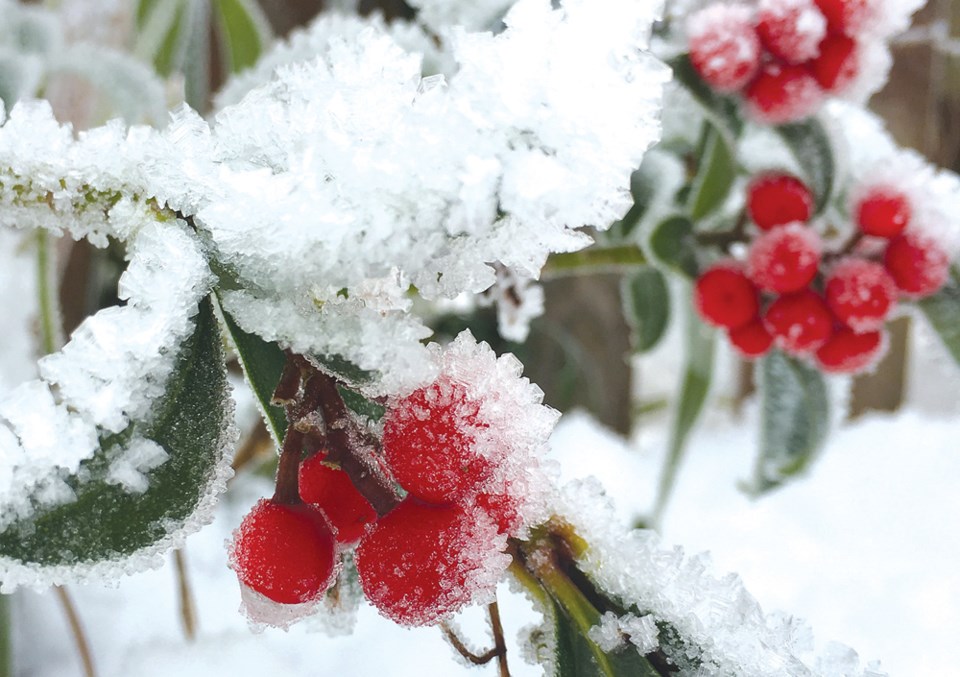With our 30-year record cold spell, our local birds must be as surprised by this weather as we are.
I like to make habitat areas with both shelter and food for birds and insects a part of every garden plan. A multilayered canopy of trees shrubs, vines and perennials will provide the all-inclusive package of food, shelter and nesting.
When planning a new garden, I start with the trees, as these take the longest to grow and will be an important focal point. Often the trees choices are the biggest decisions to be made.
Consider the shrub layer next. A mix of evergreen and deciduous, with a wide variety of flower and fruiting times, will extend the seasons of attracting birds as well as provide an abundance of fruit, nectar, seeds and insects that birds love to eat. Groundcovers and other understory plants are also important, and can attract wrens, towhees and juncos.
Sunflowers, Rudebecia, Echinacea and grasses attract finches and pine siskins; chickadees love to hang out in pear trees and wisteria vines; nuthatches like viburnums, and mountain ash trees, and grapevines attract robins.
Larger planting areas provide more area for the birds to move around in than narrow areas. The sheltered spaces between the plants provide good areas for resting and foraging. Planted areas near a building will provide a bit more protection than open areas. The more plants you have, the more birds you will have.
The big payoff here of course, is a garden full of life and movement, and the more birds you have, the more insects they will eat. I am seeing birds flitting around the garden often picking seeds from grasses and perennials left untrimmed last fall as a first choice over several well-stocked feeders. In a recently installed design, the birds can choose from a variety of evergreens for shelter from the snow and winds. Picea Omorika (Serbian spruce) is a lovely evergreen tree with a narrow habit well suited to our increasingly smaller garden spaces. This spruce, near a dense Camelia, a large old rhododendron, a few Osmanthus burkwoodii and a dogwood tree make a small front garden a welcoming place for both birds and people.
Arctostaphylos uva-ursi and wood chip mulch provide a ground storey that still has openings where the birds can forage on the ground. Birds are not interested in foraging in gravel or rock mulch.
In a few years, the Chamaecyparis and evergreen azaleas in this new garden will add another protected space for our feathered friends. One winter flowering shrub is Viburnum bodnatense. Usually blooming November through January, it has frost-tolerant, scented pink flowers good for cutting, lovely textured leaves, and the birds love to pick around in this shrub, probably eating the flower buds or small insects. Yew shrubs are another good shelter plant for birds in our local gardens and grow slowly enough to not be a maintenance burden.
Heather Schamehorn is a certified residential landscape designer and consultant, educator, food grower, habitat and sustainability advocate and acupressure therapist with an animal practice. perennialpleasures.ca http://perennialpleasures.ca



